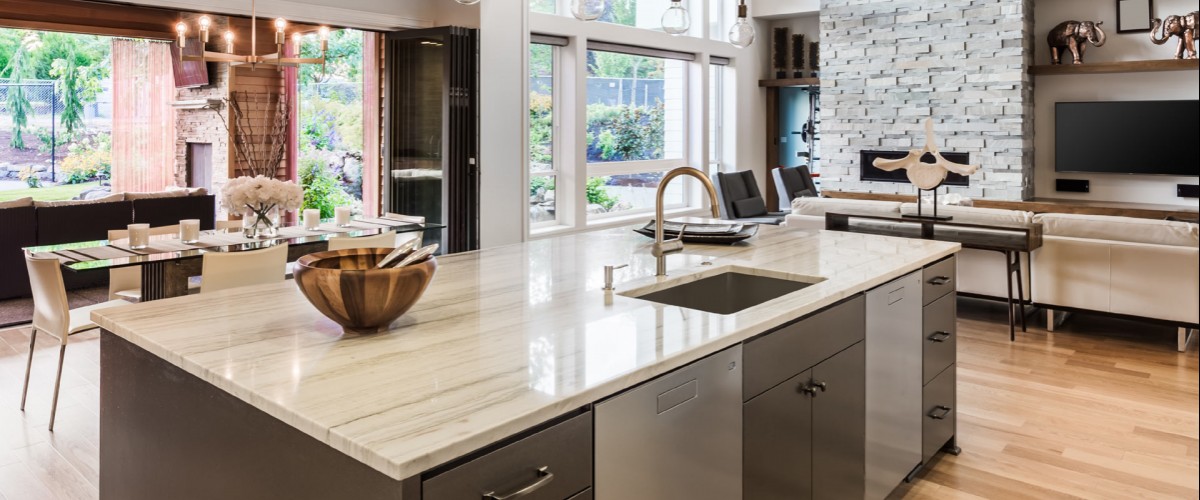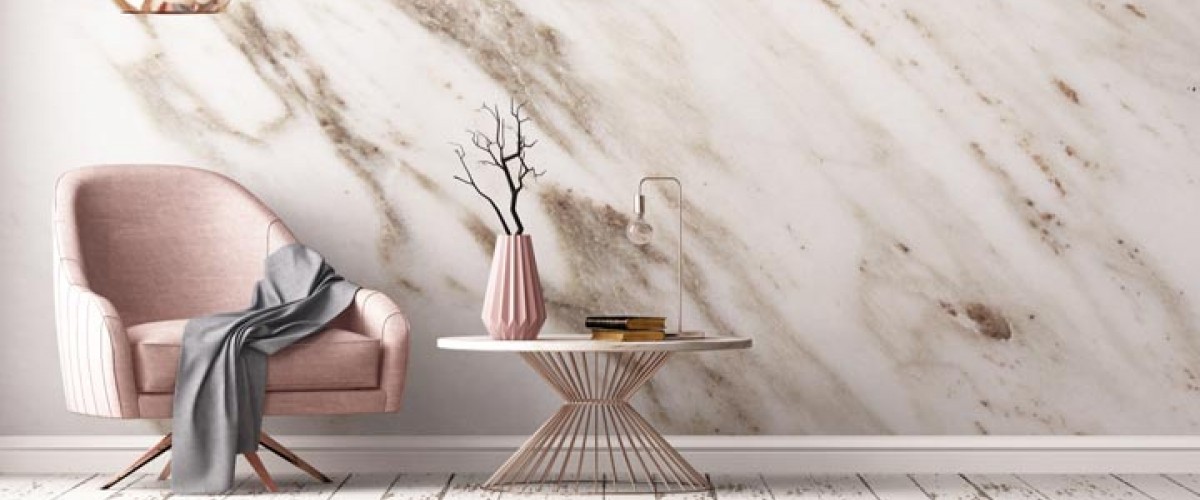Stone in bathroom
Kitchen countertops, windowsills or kitchen floors made of natural stone are popular and widespread. Most people are not aware of how well suited is this type of material for other interior use. Natural stone simply offers an infinite number of possibilities for every designer.
The choice of bathroom flooring and facing is always an important question, which comes up during the final stage of construction or reconstruction of the interior. Of course, every future occupant desires its bathroom to be unique, elegant, in accordance with his or her preferences as well as user friendly and easy to maintain. Use of natural stone for this purpose has stood the test of centuries! A few original elements are sufficient to transform the place beyond recognition, not to speak of the cases of luxurious bathrooms wholly made of marble or onyx.
Marble: It is a crystalline limestone composed of 95% calcite and 5% of various additives, including minerals, clays and organic additives, owing to which it is beautifully coloured. The colour spectrum is wide, ranging from white, beige, pink, chocolate brown, green and up to black. Price of marble depends on the sort, thickness as well as the surface finish.
Travertine is a form of limestone, deposited by mineral springs. The name travertine is derived from the Italian „travertino“, which is not surprising, since the most famous kind of travertine is Roman travertine, called „Travertino Romano classico“ typically straw coloured. Its characteristic feature is being porous, while its colour depends on the naturally occurring additives. It can be white or light yellow, light grey, brown or even purple coloured. It is mostly used with its surface sealed; however, true aficionados of travertine use it in its natural porous state.
Granite: Is commonly used to denote all deep-occurring rocks of quartz and feldspar. Stonemasons also use this term to describe several magmatic and metamorphic rocks. Granites come in various colours; they can be white, grey, light green, pink, blue, dark and even black. Important components of granites are quartz, feldspar, plagioclase, muscovite and biotite. Granites are relatively hard, stiff, and resistant to decomposition, which makes them ideal for exterior use.
What to use in the bathroom?
Ideal choices are marble or travertine. Different formats and sizes are available, typical being 30 x 30 cm, 60 x 30 cm, 60 x 40 cm, 60 x 60 cm, or 90 x 90 cm with thickness being 1 cm. Another possibility are individual large formats of thickness 2cm. Wall facing and flooring made of large formats, and possibly used in the shower enclosure, are truly formidable. Kitchen countertops, benches and parapets are also made of a single piece. Owing to their good thermal conductivity, travertine and marble can be excellently used in conjunction with underfloor heating systems.
These materials have several pleasant utility advantages. Marble, limestone and travertine (* what follows only marble) are softer materials, whose surface encloses and becomes virtually sealed by the process of brushing and polishing. This sort of surface is also hygienic, easy to clean and maintain.
Why marble?
This type of material has always been and always will be original, making it timeless. A marble bathroom is a thing which is passed down the generations! Marble can be used on its own or can be combined with other kinds of marble, woods, aluminium, stainless steel and glass. Despite being spoken of as a cold material, it doesn’t make a cold impression in the bathroom. On the contrary, especially the beige kinds appear very comforting and warm.
It is not only the infinite variety of colour, but especially marbles typical vein texture, which allow a unique solution for every bathroom. Veins can be small or marked and make every piece of marble unique. As far as possible, the individual pieces are lain so as to satisfy the trace of veins. As a result, it may be said that the stone block was brought directly from nature into your house. The effect is spellbinding, even calming, just as a look into the fire is.
Polished or matt?
The most sought-for surface finish is the highly polished kind, in which case the surface reflects light and the stones texture and colour are upheld. Other kinds of available finishes are various matt kinds – brushed, leathered, sandblasted each giving rise to a unique final impression. The correct choice of surface finish depends on the particular use of the piece.
Pros and cons
+ pros + Marble facing can create a bathroom which is stylish, yet not too suggestive (the so called vintage style is popular), or even a bathroom having a hint of luxury. The following are marbles advantages:
- water calcification resistant,
- negligible growth of fungi and bacteria,
- minor surface damage is easily repairable.
- cons -
- low resistance to acids,
- possibility of local damage,
- impregnation is required in case of direct contact with water.
Author: Ing. Roman Kostal
Date: 12.1.2019


